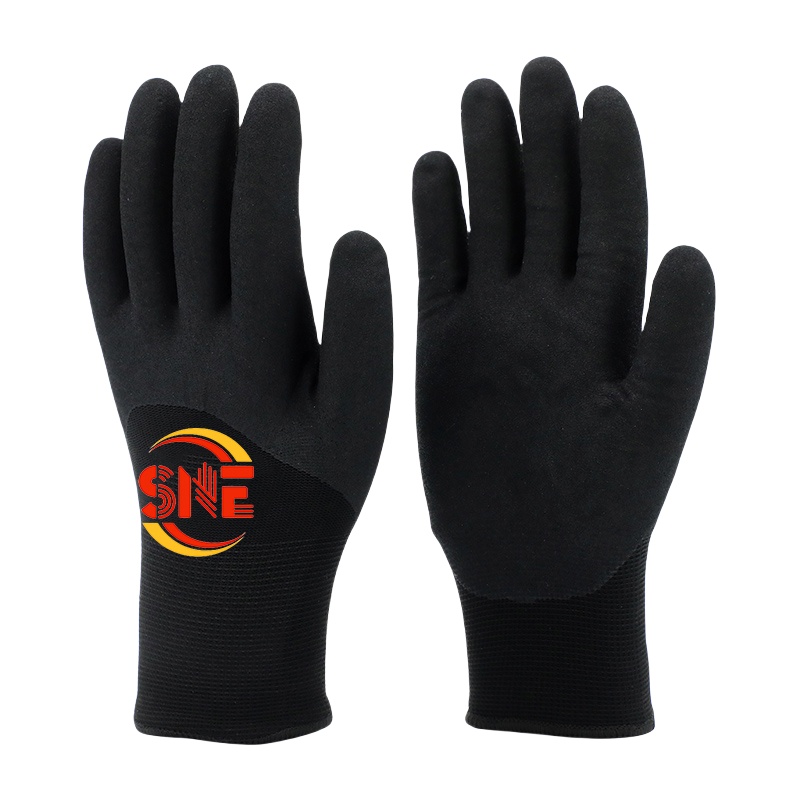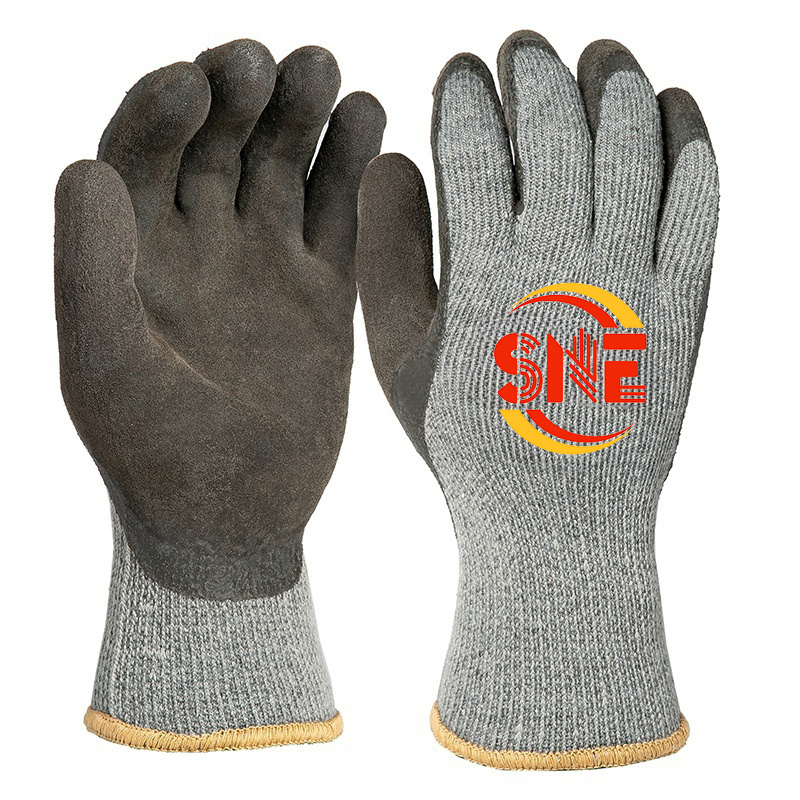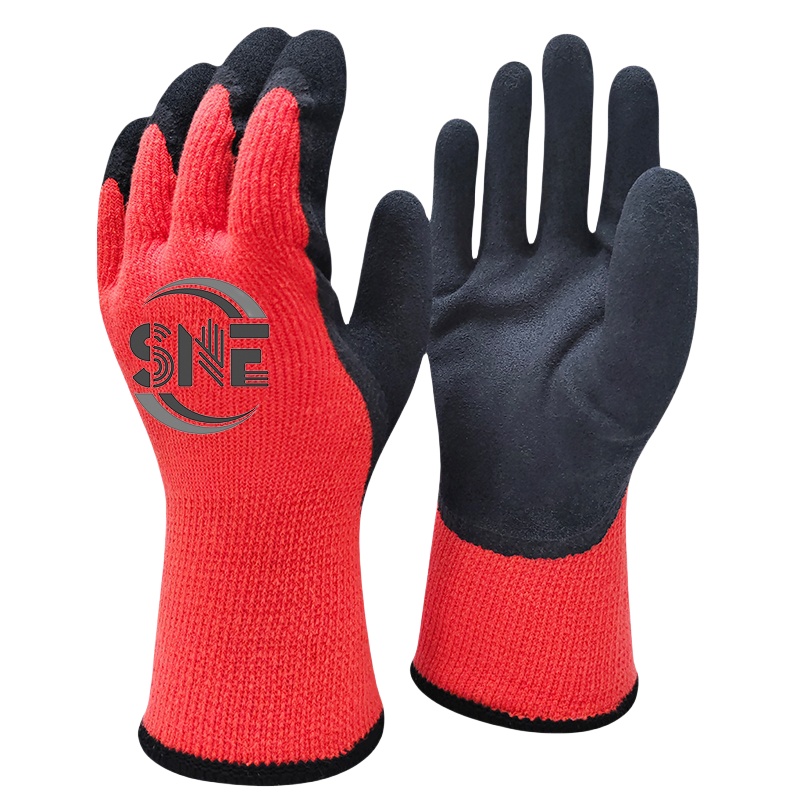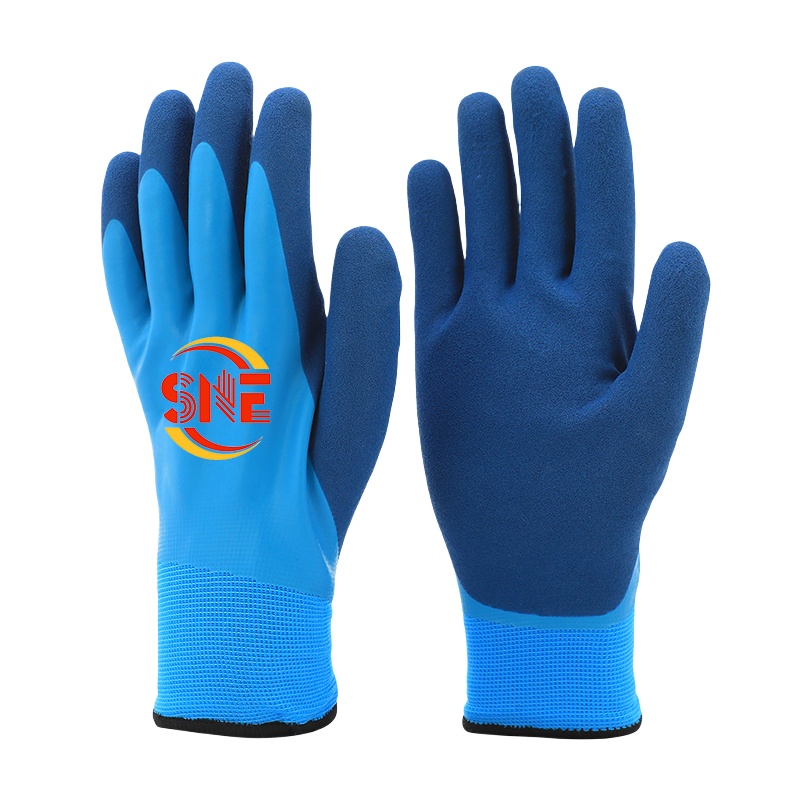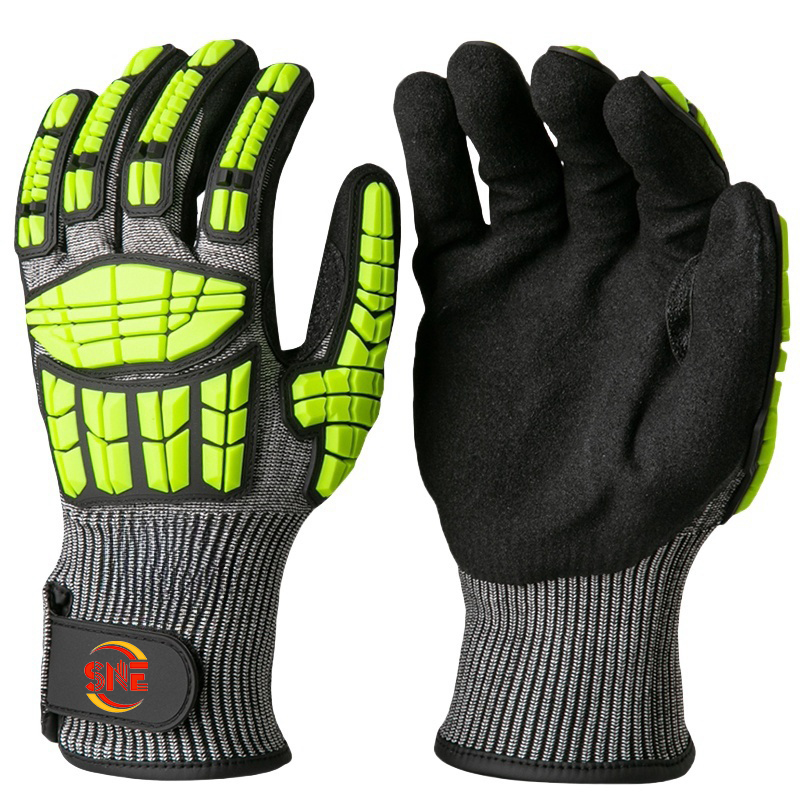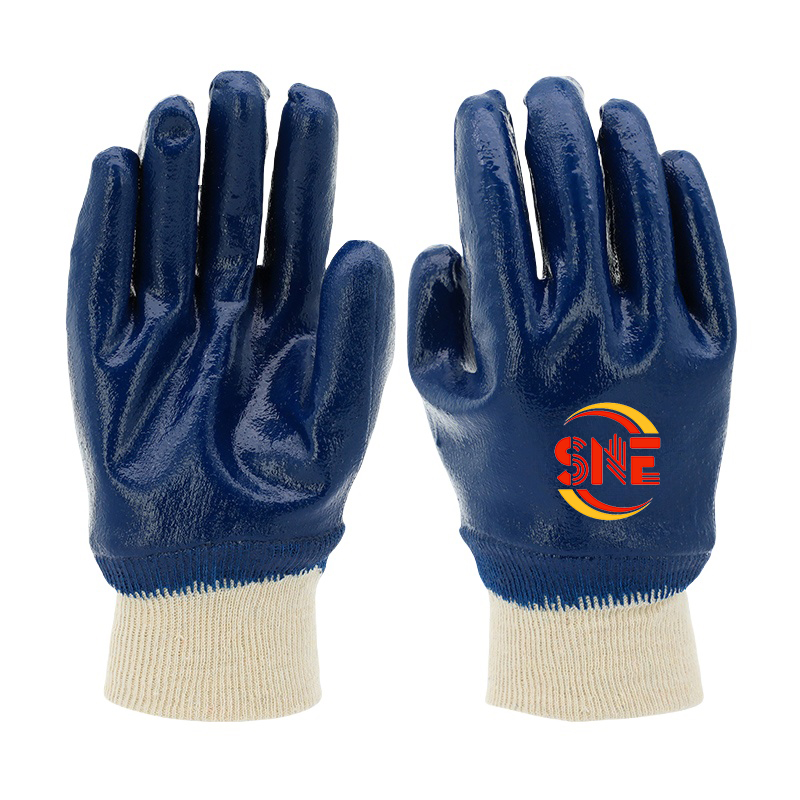OEM Work Gloves Factory: Complete Guide to Finding the Best Manufacturer in 2025
April 26, 2025
Share This Article
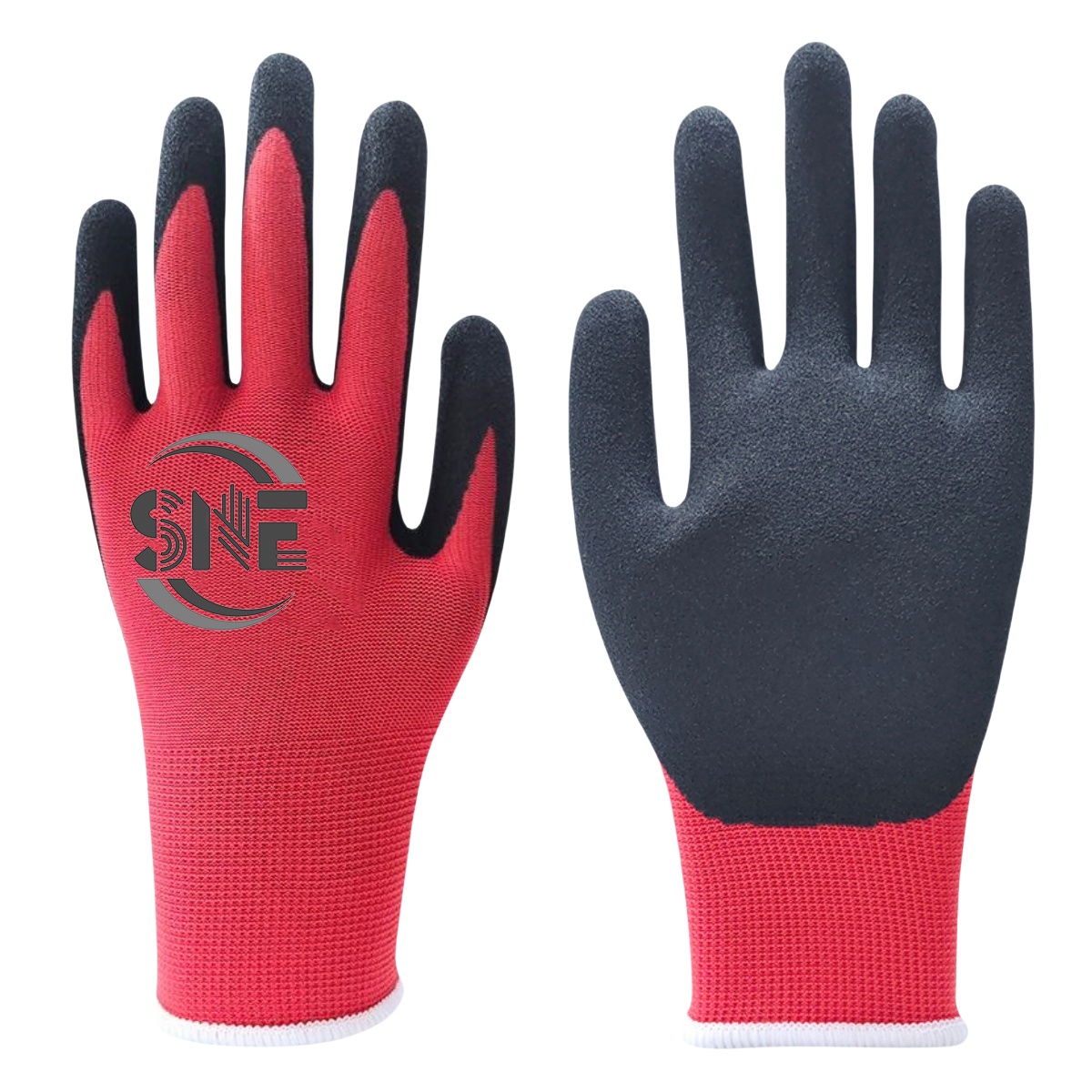
In today’s competitive industrial landscape, quality hand protection is non-negotiable. Whether you’re in construction, manufacturing, gardening, or any hands-on industry, finding the right OEM work gloves factory can make all the difference in worker safety, productivity, and your bottom line. This comprehensive guide explores everything you need to know about sourcing high-quality work gloves from reliable manufacturers in 2025.
What Are OEM Work Gloves?
OEM (Original Equipment Manufacturer) work gloves are hand protection products manufactured by one company to be rebranded and sold by another. This business model allows companies to offer premium-quality gloves under their own brand without investing in manufacturing facilities and production expertise.
The OEM work glove market encompasses a vast range of specialized hand protection solutions:
- Cut-resistant gloves for industries dealing with sharp objects
- Impact-resistant gloves for heavy machinery operations
- Chemical-resistant gloves for handling hazardous substances
- Heat-resistant gloves for high-temperature environments
- Gardening gloves for agricultural and landscaping work
- Anti-vibration gloves for power tool operators
- Disposable gloves for medical and food service industries
- General-purpose work gloves for everyday tasks
The beauty of working with an OEM glove factory is customization. You can specify exact requirements for materials, design features, sizing, colors, and performance standards to create the perfect glove for your target market.
How to Choose the Best OEM Work Gloves Factory for Your Business?
Finding the ideal manufacturing partner requires careful consideration of multiple factors. Here’s a comprehensive framework to guide your decision-making process:
1. Manufacturing Capabilities and Expertise
Look for factories with specialized expertise in the type of gloves you need. A factory that excels in producing cut-resistant gloves might not be the best choice for chemical-resistant options. Assess their:
- Years of experience in glove manufacturing
- Technical expertise with different materials and coating technologies
- Production capacity and scalability
- Equipment and technology sophistication
- Research and development capabilities
Qingdao Snell Protective Products Co., Ltd. stands out with over a decade of specialized experience in manufacturing protective gloves. Their expertise spans multiple glove types including PU, Latex, and Nitrile coated options, as well as cut-resistant and impact-resistant gloves. With two dedicated factories and six production lines, they offer both technical expertise and production capacity.
2. Quality Control Systems
Rigorous quality control is essential for consistent product excellence. Evaluate:
- ISO certifications and compliance with industry standards
- Testing procedures and equipment
- Inspection protocols at different production stages
- Defect rates and quality consistency
- Sample approval processes
3. Minimum Order Quantities (MOQ)
MOQ requirements vary significantly between manufacturers and can be a critical factor, especially for smaller businesses or those testing new markets. Consider:
- Standard MOQ requirements
- Flexibility for initial orders
- Sample order policies
- Volume-based pricing tiers
4. Customization Capabilities
The ability to create tailored products is the essence of OEM manufacturing. Assess:
- Available customization options (materials, designs, features)
- Color matching capabilities
- Private labeling and packaging options
- Technical design assistance
- Prototype development process
5. Compliance and Certification Standards
Work gloves must meet specific safety and quality standards for different markets. Verify:
- CE certification for European markets
- ANSI/ISEA compliance for US markets
- EN388, EN407, and other relevant testing standards
- ISO 9001 quality management certification
- Environmental compliance certification
Where to Buy OEM Work Gloves?
The global market offers various sourcing options, each with distinct advantages and considerations:
Direct Factory Sourcing
Establishing direct relationships with manufacturers offers the most control and best pricing but requires more hands-on management.
Advantages:
- Lowest possible pricing
- Direct communication with production teams
- Customization flexibility
- No intermediary markups
Considerations:
- Requires larger order volumes
- More complex logistics management
- Cultural and language barriers may exist
- Time zone differences can slow communication
Trade Shows and Industry Exhibitions
International trade shows offer opportunities to meet multiple manufacturers in person and evaluate their offerings firsthand.
Key Work Glove Industry Trade Shows:
- A+A Safety Exhibition (Germany)
- National Safety Council Congress & Expo (USA)
- China International Occupational Safety & Health Exhibition
- International Hardware Fair (Germany)
- The Safety & Health Expo (UK)
Online B2B Marketplaces
Platforms like Alibaba, Global Sources, and Made-in-China connect buyers with manufacturers globally.
Advantages:
- Wide selection of suppliers
- Initial verification processes
- Convenient communication tools
- Payment protection services
Considerations:
- Varying levels of supplier vetting
- Quality consistency challenges
- Limited ability to assess manufacturing facilities
- Potential communication barriers
Sourcing Agents and Trading Companies
These intermediaries manage the sourcing and production process on your behalf.
Advantages:
- Local expertise and language capabilities
- Factory vetting and quality oversight
- Consolidated shipping and logistics
- Lower MOQs sometimes possible
Considerations:
- Additional cost layer
- Less direct control over production
- Potential conflicts of interest
- Varying levels of industry expertise
Top OEM Work Gloves Manufacturers in China
China remains the global leader in work glove manufacturing, offering unmatched production capacity, competitive pricing, and increasingly sophisticated technical capabilities.
Qingdao Snell Protective Products Co., Ltd.
As a standout manufacturer in the protective gloves industry, Qingdao Snell operates two modern factories in Gaomi and Nantong with six dedicated production lines. Founded in 2024 but built on decades of industry experience, they’ve quickly established themselves as a reliable partner for businesses worldwide.
Key Strengths:
- ISO9001 and CE certified production
- Specialized in automotive, construction, machinery, and logistics glove solutions
- Comprehensive product range including PU, Latex, and Nitrile coated gloves
- Factory-direct supply model eliminating middleman costs
- Custom design capabilities for industry-specific requirements
- MOQ flexibility ranging from 3,000-20,000 pieces depending on specifications
Their commitment to quality is evident in their rigorous testing protocols and continuous innovation, making them a preferred choice for companies seeking both standard and customized hand protection solutions.
Other Notable Chinese Manufacturers
- Shanghai Safety Products Manufacturing Co., Ltd. – Specializing in cut-resistant and mechanical work gloves
- Guangzhou Protective Equipment Factory – Known for chemical-resistant and disposable gloves
- Hebei Industrial Gloves Co., Ltd. – Focusing on heavy-duty and impact-resistant options
- Jiangsu Safety Products Manufacturing – Specializing in construction and general-purpose work gloves
OEM Work Gloves Manufacturers in the USA
While American manufacturers typically have higher production costs, they offer advantages in terms of quality control, intellectual property protection, and made-in-USA marketing value.
Leading American Manufacturers:
- Superior Glove Works (US Division) – Specializing in cut-resistant and specialty work gloves
- Mechanix Wear – Known for high-performance work gloves with innovative features
- West Chester Protective Gear – Offering comprehensive work glove solutions across industries
- PIP (Protective Industrial Products) – Providing a wide range of hand protection products
- Radians Safety Products – Known for innovative designs and ergonomic features
American manufacturers generally excel in high-performance technical gloves, advanced materials research, and specialized niche products that command premium pricing. Their proximity to North American markets also means faster shipping and easier communication for US-based companies.
What to Look for in a Reliable OEM Work Gloves Factory?
Beyond basic manufacturing capabilities, several key factors distinguish truly exceptional manufacturing partners:
Communication and Responsiveness
Effective, timely communication is the foundation of successful manufacturing partnerships. Evaluate:
- Response times to inquiries and concerns
- English proficiency of key contacts
- Availability of technical staff for consultations
- Transparency about challenges and limitations
- Documentation quality and clarity
A factory that takes days to respond to simple questions or struggles to explain technical details clearly will likely create ongoing frustrations throughout your partnership.
Ethical Manufacturing Practices
Responsible sourcing increasingly influences consumer purchasing decisions. Assess:
- Worker safety conditions and policies
- Fair labor practices and compensation
- Environmental responsibility initiatives
- Waste management and sustainability efforts
- Community engagement and corporate responsibility
Qingdao Snell demonstrates their commitment to ethical manufacturing through sustainable practices, safe working conditions, and fair employment policies. Their philosophy that “safety is key to progress” extends from their products to their production processes.
Sample Quality and Consistency
The quality of product samples provides insight into a manufacturer’s capabilities and attention to detail. Consider:
- Initial sample quality and accuracy to specifications
- Consistency between sample runs
- Pre-production sample approval process
- Mass production consistency with approved samples
- Sample costs and policies
MOQ (Minimum Order Quantity) Considerations When Ordering Work Gloves
Minimum Order Quantity (MOQ) is a critical factor when selecting an OEM work gloves factory. Understanding MOQ requirements and negotiating favorable terms can significantly impact your business operations and cash flow.
Understanding Standard MOQ Requirements
MOQ requirements vary widely among manufacturers based on several factors:
- Glove type and complexity – Specialized gloves with unique features typically have higher MOQs than standard styles
- Customization level – Highly customized designs generally require larger minimum orders
- Material specifications – Uncommon materials or colors often increase minimum quantities
- Production efficiency – Larger factories may require higher MOQs to justify production line setup
- Geographic location – MOQs often vary by country, with Asian manufacturers generally offering lower minimums than Western counterparts
For context, here’s what you might expect from different factory types:
| Factory Type | Typical MOQ Range | Best For |
|---|---|---|
| Large Chinese Manufacturers | 5,000-50,000 pairs | High-volume importers, major retailers |
| Mid-Size Asian Factories | 1,000-10,000 pairs | Medium distributors, growing brands |
| Specialized Boutique Producers | 500-3,000 pairs | Niche markets, premium products |
| Western Manufacturers | 2,500-25,000 pairs | Domestic supply chains, tight timelines |
Qingdao Snell positions itself competitively with MOQs ranging from 3,000-20,000 pairs depending on specifications, making them accessible to both established distributors and growing businesses looking to develop custom glove lines.
Strategies for Navigating MOQ Requirements
If a manufacturer’s standard MOQ exceeds your needs, consider these approaches:
- Start with stock products – Many factories offer lower MOQs for existing designs without customization
- Negotiate mixed-color orders – Request the same style in multiple colors to meet total MOQ while diversifying inventory
- Phase customization – Begin with standard products with your labels, then introduce full customization as volumes increase
- Combine different models – Some factories will allow combining different glove styles to reach minimum totals
- Partner with other buyers – Consider group purchasing with complementary businesses to share minimum orders
MOQ Impact on Unit Pricing
Understanding the relationship between order quantity and unit pricing helps optimize purchasing decisions:
| Order Volume | Typical Price Discount | Additional Considerations |
|---|---|---|
| Minimum MOQ | Base price | Often includes setup charges |
| 2x MOQ | 5-10% discount | May qualify for better payment terms |
| 5x MOQ | 10-20% discount | Often includes free customization options |
| 10x MOQ | 15-30% discount | May qualify for exclusive distribution rights |
| Annual contracts | 20-40% discount | Usually includes guaranteed capacity allocation |
When evaluating pricing across different manufacturers, ensure you’re comparing equivalent volumes, as discounts can significantly impact total landed costs.
How to Customize Work Gloves with Your Logo and Branding?
Effective branding transforms standard work gloves into powerful marketing tools that reinforce your company identity while in use. Here’s a comprehensive overview of customization options:
Logo Application Methods
Different logo application techniques offer varying durability, appearance, and cost implications:
- Screen Printing
- Most common and economical option
- Ideal for simple designs with limited colors
- Moderate durability; may fade with heavy use
- Quick production turnaround
- Heat Transfer
- Excellent for complex, multi-color designs
- Provides vibrant color reproduction
- Good durability on appropriate materials
- Higher cost than screen printing
- Embroidery
- Premium appearance with dimensional quality
- Exceptional durability that often outlasts the glove
- Limited detail capability for small designs
- Adds material thickness that may affect comfort
- Silicone Printing
- Creates raised, tactile logos
- Excellent durability and wash resistance
- Can include special effects like glow-in-the-dark
- Higher cost than basic printing methods
- Laser Etching
- Sophisticated, permanent branding
- Subtle, professional appearance
- Limited to certain materials (primarily leather)
- Minimal impact on glove functionality
Strategic Placement Options
Logo positioning affects both visibility and durability:
- Wrist/cuff area – Most common placement; maximum visibility when worn
- Back of hand – High visibility during use; larger imprint area
- Palm area – Less visible but unique positioning; may wear faster
- Fingertips – Distinctive placement for specialized applications
- Packaging – Additional branding opportunity without affecting glove design
Designing for Different Materials
Material characteristics significantly impact branding effectiveness:
- Knitted fabrics – Best with embroidery or heat transfers; screen printing may bleed
- Leather – Excellent for embossing, debossing, laser etching, or screen printing
- PU/nitrile coatings – Compatible with most printing methods; consider color contrast
- Cotton/canvas – Versatile with most branding methods; excellent print durability
- Synthetic leather – Works well with heat transfers and embossing techniques
Beyond Logo Application: Comprehensive Branding
Complete branding strategies incorporate multiple customization elements:
- Custom colorways – Match gloves to corporate color schemes
- Branded packaging – Custom boxes, bags, or display materials
- Sewn-in labels – Internal tags with care instructions and branding
- Custom wrist closures – Branded Velcro or elastic components
- Special materials – Unique textures or finishes exclusive to your brand
Qingdao Snell Protective Products offers comprehensive customization services with their factory-direct business model. Their technical team works directly with clients to develop branded solutions that balance visual impact, durability, and cost-effectiveness. Their extensive experience across industries enables them to recommend optimal branding approaches based on end-use environments and wear patterns.
What Are the Most Durable Materials for Work Gloves?
Material selection dramatically impacts glove performance, comfort, and durability. Understanding material properties helps specify the most appropriate gloves for specific applications.
Comparative Performance of Primary Materials
Different materials offer unique combinations of protection, dexterity, and durability:
| Material | Key Strengths | Limitation Factors | Best Applications |
|---|---|---|---|
| Nitrile Coating | Oil/chemical resistance, excellent grip, puncture resistance | Limited breathability in full-coat versions | Automotive, oil/gas, chemical handling |
| Latex Coating | Superior elasticity, excellent wet grip, good abrasion resistance | Potential allergic reactions, degrades with oil exposure | Construction, general assembly, gardening |
| Polyurethane (PU) Coating | Outstanding tactile sensitivity, excellent abrasion resistance, lightweight | Limited chemical resistance, moderate heat resistance | Electronics assembly, precision work, packaging |
| HPPE (High-Performance Polyethylene) | Exceptional cut resistance, comfort, washability | Limited heat resistance, moderate puncture protection | Food processing, glass handling, metal fabrication |
| Kevlar® | Superior cut and heat resistance, good durability | Higher cost, yellows with UV exposure | Metal stamping, automotive, recycling operations |
| Leather (Cowhide) | Excellent abrasion resistance, good heat protection, durability | Limited dexterity, slower drying when wet | Welding, heavy construction, material handling |
| Leather (Goatskin) | Superior dexterity, natural comfort, good durability | Higher cost, moderate puncture resistance | Precision assembly, driving, light fabrication |
| Cotton/Poly Blends | Comfort, breathability, economical | Limited protection, moderate durability | Light-duty applications, inspection, general handling |
Material Innovations Transforming Work Glove Performance
Recent technological advances have created new possibilities in protection and comfort:
- Engineered Yarn Blends
- Composite materials combining HPPE, steel, glass fiber, and synthetic materials
- Provides tailored protection levels with enhanced comfort
- Enables meeting specific cut-resistance standards while maintaining dexterity
- Advanced Coating Technologies
- Micropore nitrile formulations that enhance breathability
- Sandy/foam finish coatings for superior grip in varied conditions
- Multi-layer coatings combining different materials for comprehensive protection
- Sustainable Material Developments
- Biodegradable coating options with reduced environmental impact
- Recycled content integration in liners and components
- Water-based manufacturing processes reducing chemical usage
- Temperature-Adaptive Materials
- Fabrics that actively regulate hand temperature in varying conditions
- Phase-change materials providing cooling effects during exertion
- Advanced insulation technologies for cold-environment applications
When selecting materials for custom glove development, consider the specific hazards and working conditions of end-users. The optimal material combination balances protection, comfort, dexterity, and cost-effectiveness for your specific application.
How to Ensure Quality Control for OEM Work Gloves?
Implementing robust quality control measures is essential when sourcing from OEM work glove factories. A systematic approach to quality assurance protects your brand reputation and reduces costly product failures.
Establishing Comprehensive Quality Standards
Effective quality control begins with clearly defined specifications:
- Detailed Technical Requirements
- Material composition and weight specifications
- Dimensional tolerances for sizing consistency
- Seam and stitch density requirements
- Coating thickness and coverage standards
- Performance metrics (cut resistance, abrasion resistance, etc.)
- Visual and Aesthetic Standards
- Color matching requirements and acceptable variations
- Logo placement specifications and tolerances
- Surface finish and appearance standards
- Packaging presentation requirements
- Freedom from visual defects (stains, irregular stitching, etc.)
- Performance Testing Parameters
- Required certification standards (EN388, ANSI, etc.)
- Additional performance tests beyond minimum requirements
- Simulated use testing protocols
- Environmental exposure testing (heat, cold, UV, etc.)
- Chemical resistance verification when applicable
Implementing a Multi-Stage Inspection Process
Quality assurance should occur throughout the production process:
Pre-Production Inspection:
- Material verification before cutting
- Component quality checking
- Color matching validation
- Pre-production sample approval
In-Process Quality Control:
- First article inspection after production begins
- Random sampling during production runs
- Critical control point monitoring
- Operator self-inspection procedures
Final Quality Inspection:
- AQL (Acceptable Quality Level) sampling and testing
- Performance testing on finished products
- Complete visual inspection protocols
- Packaging and labeling verification
- Documentation and certification confirmation
Qingdao Snell implements rigorous quality control systems across their production facilities. With ISO 9001 certification and CE compliance, they maintain consistent quality through systematic inspection protocols at every production stage. Their dedicated quality control team conducts thorough testing to ensure all products meet or exceed specified standards before shipment.
Addressing Common Quality Issues
Understanding typical defects helps establish preventive measures:
Sizing Inconsistency:
- Implement standardized measuring procedures
- Require measurement reporting at multiple production stages
- Establish clear acceptable tolerances
- Conduct fit testing with various hand sizes
Coating Failures:
- Monitor dipping temperature and timing precisely
- Verify proper curing procedures
- Test coating adhesion during production
- Implement accelerated aging tests
Seam Failures:
- Specify appropriate thread types and strengths
- Establish minimum stitch counts per inch
- Require reinforcement at stress points
- Test seam strength through pull testing
Logo Application Issues:
- Approve final logo applications before mass production
- Specify washing/abrasion resistance requirements
- Implement curing verification procedures
- Test logo durability in simulated use conditions
Documentation and Traceability
Comprehensive documentation supports quality management:
- Maintain detailed production records by lot
- Implement material traceability systems
- Document all testing results and certifications
- Establish clear protocols for non-conforming products
- Maintain reference samples from production runs

